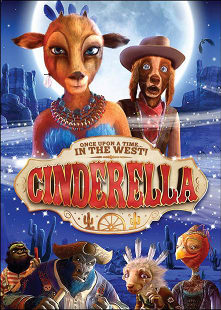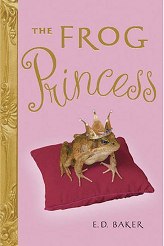fairy tales
Review: It’s bad movie time again with 'Cinderella'
Posted by crossaffliction on Thu 28 Feb 2013 - 03:04 If tasked with coming up with a reboot of Mystery Science Theater 3000 – first of all, I wouldn’t actually reboot it. I’d have Crow, Tom Servo and a new host back on the Satellite of Love with absolutely no explanation, because it’s the show with “repeat to yourself it’s just a show, you really should relax” in the theme song.
If tasked with coming up with a reboot of Mystery Science Theater 3000 – first of all, I wouldn’t actually reboot it. I’d have Crow, Tom Servo and a new host back on the Satellite of Love with absolutely no explanation, because it’s the show with “repeat to yourself it’s just a show, you really should relax” in the theme song.
Second, I wouldn’t pitch it to Comedy Central or Syfy, but to a family oriented channel, because God knows there are enough lousy kid’s movies to go after; I’d first go after The Hub, because they seem to go after the cult, family appropriate shows, they already have a working relationship with Shout! Factory, the company that does the MST3K DVDs (and that would help get them rights to air older episodes, probably) and finally it would be about the only way to do My Little Pony: The Movie, which I’ve already laid the groundwork for. Use that for the series premiere; relatively high profile movie for the opener!
Finally, I’d pitch myself as the host – this is a fantasy that will eventually segue into a review of a bad movie, so you might as well go for it, right?
The True Story of Puss in Boots is a definite get. Hyenas might not work for the new direction of the show, but I have another movie in mind. It’s called Cinderella, and definitely falls into the fantasy MST3K reboot territory.
Review: The 'Tales of the Frog Princess' series, by E. D. Baker
Posted by Fred on Sat 10 Nov 2012 - 23:39 Technically, “fractured fairy tales” is a TV cartoon series by Jay Ward, originally part of Ward’s Rocky and His Friends from 1959 to 1961; but it has become a popular generic term for any modernized, satirical story in a traditional European fairy tale setting. This certainly fits Elizabeth D. Baker’s Tales of the Frog Princess novels. Although published for the 10- to 14-year-old age group, they are witty enough that adults will enjoy them, and they contain enough talking animals and humans transformed into animals to please the average ‘morph fan.
Technically, “fractured fairy tales” is a TV cartoon series by Jay Ward, originally part of Ward’s Rocky and His Friends from 1959 to 1961; but it has become a popular generic term for any modernized, satirical story in a traditional European fairy tale setting. This certainly fits Elizabeth D. Baker’s Tales of the Frog Princess novels. Although published for the 10- to 14-year-old age group, they are witty enough that adults will enjoy them, and they contain enough talking animals and humans transformed into animals to please the average ‘morph fan.
The narrator, Emeralda (Emma), is a tomboyish 14-year-old princess of the stereotypical fairytale Kingdom of Greater Greensward. The kingdom is supposed to be protected from conquest by a princess who becomes a kindly, guardian Green Witch in each generation. Unfortunately, a fairy’s curse has turned any princess who touches a flower after she turns sixteen into an ugly, nasty hag, which disqualifies the Green Witches. When Emma’s grandmother, Queen Olivene, fell under the curse, she turned her daughter Grassina’s fiancée Haywood into a frog (they think). Emma is despondently sure that she is too inept to ever become her generation’s Green Witch. Also, her mother, Queen Chartreuse, is trying to marry her off to handsome but unlikable Prince Jorge.
Animation short: 'Lil' Red'
Posted by Fred on Sun 24 Jun 2012 - 18:29The Cartoon Brew just posted this 1 1/2-minute Lil' Red by Canadian animator Cale Atkinson.
CB moderator Amid Amidi calls it "minimalist". It is so minimalist that it is vague as to whether the wolf is anthropomorphic or not; but the wolf in Little Red Riding Hood is traditionally considered anthropomorphic.
Read more: Lil' Red - The Making Of (with pictures, storyboards and video)
Five hundred new fairytales discovered in Germany
Posted by Patch Packrat on Thu 8 Mar 2012 - 04:06Anthropomorphic fiction branches from a long tradition of mythic literature. When considering its roots, you may think of Aesop's Fables, or the fairy tales of the Brothers Grimm and Hans Christian Anderson. (My pick for most interesting would be Andrew Lang, who "examined the origins of totemism.")
The discovery of 500 previously-lost fairy tales may add their collector, Franz Xaver von Schönwerth (1810-1886), to the list.